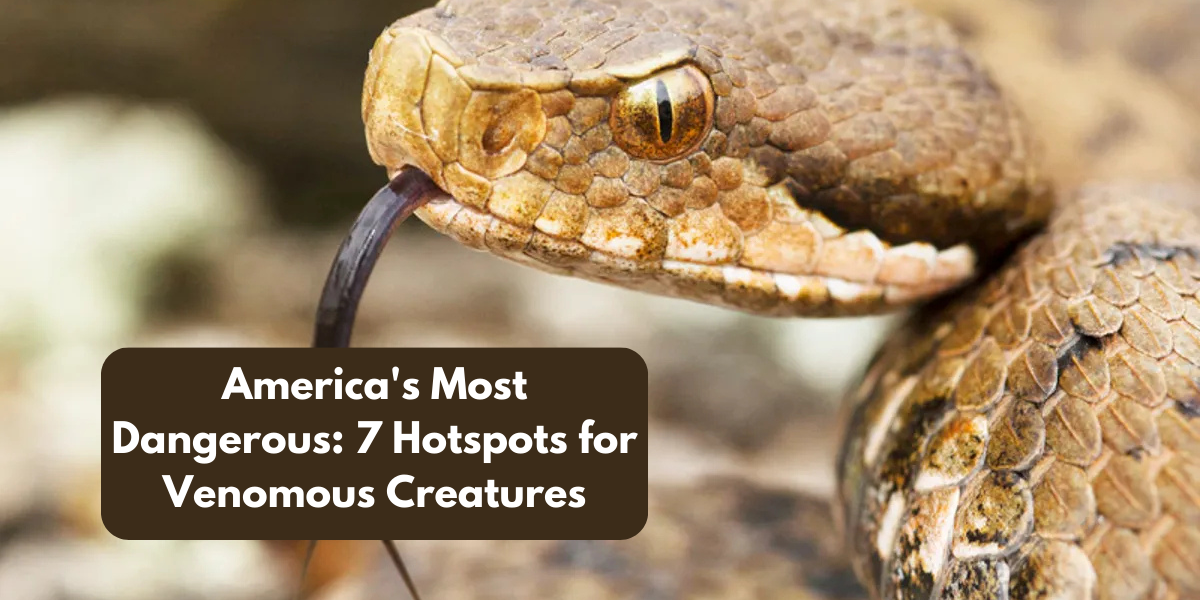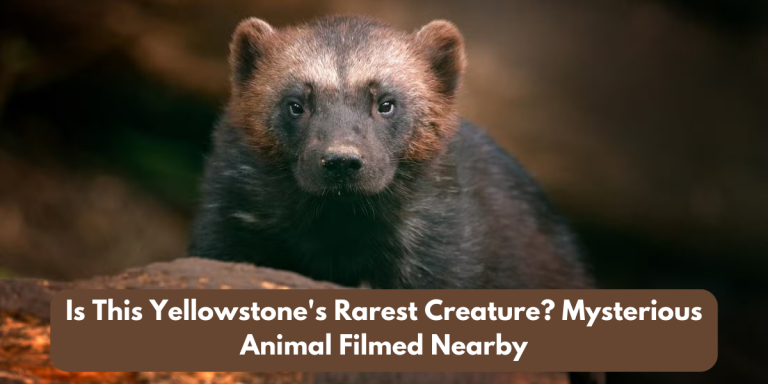Spiders, frogs, and snakes may be among the first animals that spring to mind when you think about poisonous animals. Snakes are dreadfully known for being among the most terrifying reptiles on the planet. Whether you’re hiking, biking, or otherwise spending time in nature, there are a lot of different kinds of snakes to stay away from.
There are about 3,400 snake species on the earth, some of which are poisonous and others of which are not. Snake attacks have been prevalent outside of America in areas like Iceland, Greenland, New Zealand, and Ireland.
With the exception of Alaska, venomous snakes can be encountered wherever in the United States. The seven most popular locations in America to see venomous animals are compiled here.
7. Mississippi
Venomous snakes are undoubtedly one of the main worries people have when it comes to the negative aspects of living in a state like Mississippi. Currently, Mississippi is home to more than 50 snake species.
Six of the 50 snake species found in Mississippi are completely poisonous. Residents of Mississippi should be mindful of the following venomous snakes: Eastern diamondback rattlesnakes, pygmy rattlesnakes, timber rattlesnakes, cottonmouth snakes, Southern copperheads, and Eastern coral snakes.
However, snake bites are not very prevalent in Mississippi. 135 cases of venomous snake bites were reported in 2019. Mississippi is home to the pickerel frog, the only dangerous frog aside from snake sightings in the Hospitality State. In Mississippi, two extremely deadly spiders are the brown recluse and the black widow.
| Venomous Animals: | Black Widow, Brown Recluse, Southern copperheads, cottonmouth snakes, Eastern coral snakes, pygmy rattlesnakes, timber rattlesnakes, Eastern diamondback rattlesnakes |
| Snake species: | >50 |
| Annual snake bites: | 135 |
| State locations: | Yards, gardens, porches, lakes, rivers, marshy areas, brush piles, barns, sheds, forests, old fields |
6. Oklahoma
Tornadoes are a major problem in Oklahoma, but that’s not the only thing locals need to be mindful of. Oklahoma is also home to a sizable snake population.
Seven of the forty-six snake species are potentially poisonous. Well-known snakes that can bite with venom include cottonmouths, copperheads, Western diamondback rattlesnakes, timber rattlesnakes, Western pygmy rattlesnakes, Western massasaugas, and prairie rattlesnakes.
In terms of the number of snake bites per person, Oklahoma ranks fourth in the US. We don’t think such odds are very good. Unfortunately for inhabitants of Oklahoma, the state has twice as many snakebite cases as almost every other state in the union.
Oklahoma has to contend with pickerel frogs, much like Mississippi. There are also brown recluse spiders and black widows that can spray poison.
| Venomous Animals: | Pickerel Frogs, Black Widow, Brown Recluse, Cottonmouths, Copperheads, Western diamondback rattlesnakes, timber rattlesnakes, Western pygmy rattlesnakes, Western massasaugas, and prairie rattlesnakes |
| Snake species: | 46 |
| Annual snake bites: | 300 |
| State locations: | Moist areas, prairies, rocky ridges, near water, prairies, rocky ridges, forested areas, beaver dams |
5. California
People frequently picture California’s charming tiny communities, which are ideal for retirement since they provide such a high standard of living. However, it is still important to be aware of venomous snakes. There are 33 snake species in California, and six of them are poisonous.
In California, all six of the poisonous snakes are actually rattlesnakes. California is home to several different species of rattlesnakes, including the Mojave, Western, Western diamondback, red diamond, Southwestern speckled, and panamint. In the cherished Golden State, an estimated 221 individuals get bitten by snakes year.
Sonoran Desert toads, California toads, and African clawed frogs are poisonous creatures that should be avoided in California. The Western black widow, brown widow, yellow sac, desert recluse, and Chilean recluse spiders are the five most dangerous spiders in California.
| Venomous Animals: | California toads, African clawed frogs, Sonoran Desert toads, Black Widow, Brown Recluse, Yellow sac spider, Desert recluse spider, Chilean recluse spider, Western rattlesnake, Western diamondback rattlesnake, red diamond rattlesnake, Southwestern speckled rattlesnake, Mojave rattlesnake, and panamint rattlesnake |
| Snake species: | 33 |
| Annual snake bites: | 221 |
| State locations: | Coastal areas, deserts, grasslands, and urban areas |
4. Alabama
The abundance of snakes in Alabama is reason enough for people to exercise caution whenever they go outside. Even though Alabama offers some interesting and memorable day outings, snakes could still be an issue. Alabama is home to 66 different kinds of snakes, six of which are poisonous.
The coral snake, copperhead, cottonmouth, pygmy, timber, and eastern diamondback rattlesnakes are all poisonous, meaning they have the ability to hurt people.
An estimated 208 poisonous snake bites occurred in Alabama in 2024. 6.37 out of every 100,000 residents experienced that terrifying situation.
To make it harder for snakes to find hiding spots, residents of Alabama are urged to routinely pick up any rubbish near their homes. In addition to snakes, Alabama is home to poisonous creatures such as brown recluse spiders, black widow spiders, and pickeral frogs.
| Venomous Animals: | Pickeral frogs, Black Widow, Brown Recluse, Eastern diamondback rattlesnake, Timber rattlesnake, Pygmy rattlesnake, Copperhead, Cottonmouth, Coral snake |
| Snake species: | 66 |
| Annual snake bites: | 208 |
| State locations: | Sparsely settled land, forested areas, shaded areas, old rocks, wood piles |
3. New mexico
Although New Mexico is known as the Land of Enchantment, its snake population is anything but charming. New Mexico is home to 50 different snake species, eight of which are poisonous.
The slithering reptiles you might encounter in New Mexico include massasaugas, Western coral snakes, Mojave rattlesnakes, black-tailed rattlesnakes, Western diamondback rattlesnakes, Western (prairie) rattlesnakes, and rock rattlesnakes.
In New Mexico’s vast wilderness, there are many beautiful locations to discover. These consist of Chaco Culture National Historical Park, White Sands National Park, and Carlsbad Caverns National Park. But since snakes are a factor in New Mexico, it’s important to always be on the lookout for them.
The Couch’s spadefoot toad, Great Basin spadefoot, and Colorado River toad are among the toxic frogs found in New Mexico. The black widow, wolf, and brown recluse spiders are among the venomous spiders found in New Mexico.
| Venomous Animals: | Couch’s spadefoot toad, Great Basin spadefoot, Colorado River toad, Black Widow, Brown Recluse, Wolf Spider, Rock rattlesnake, Western diamondback rattlesnake, Western (prairie) rattlesnake, Mojave rattlesnake, Black-tailed rattlesnake, Massasaugas, Western coral snake |
| Snake species: | 50 |
| Annual snake bites: | 100 |
| State locations: | Firewood, hay stacks, junk piles, gardens and flower beds, untrimmed shrubs, pond and stream banks, cluttered basements and attics |
2. Arizona
Arizona is known for having the worst reputation in America for deadly snakes. The Copper State is home to 40 different snake species, and a staggering proportion of them are poisonous. The Great Basin rattlesnake, Hopi rattlesnake, sidewinder rattlesnake, Arizona black rattlesnake, Mexican vine snake, Lyre snake, and Arizona coral snake are all somewhat eerie.
Additionally, the Mojave, tiger, ridge-nosed, Northern blacktail, speckled, prairie, Western diamondback, twin-spotted, and Grand Canyon rattlesnakes are among the several species.
In Arizona, between 250 and 350 snake bites are reported annually, with 200 of those bites often coming from ferocious rattlesnakes.
The only deadly frog in Arizona is the Sonoran Desert toad, sometimes referred to as the Colorado River toad. It is also home to the Arizona brown spider, black widow, and brown recluse spider.
| Venomous Animals: | Sonoran Desert toad, Black Widow, Brown Recluse, Arizona brown spider, Mojave rattlesnake, Tiger rattlesnake, Ridge-nosed rattlesnake, Northern blacktail rattlesnake, Speckled rattlesnake, Prairie rattlesnake, Western diamondback rattlesnake, Twin-spotted rattlesnake, Grand Canyon rattlesnake |
| Snake species: | 40 |
| Annual snake bites: | 250-350 |
| State locations: | Highly elevated mountainous, woodlands, rocky canyons, riparian areas, grasslands, heavily forested areas |
1. Texas
Knowing about the snake population is unquestionably vital, regardless of whether you live in Texas full-time or are just visiting for a weekend.
This is due to the fact that there are currently 15 potentially harmful snake species that may be found in the state of Texas. Five of those fifteen are particularly poisonous. The cottonmouth, timber rattlesnake, copperhead, Texas coral snake, and Texas diamondback rattlesnake are the poisonous ones.
Texas is home to over 105 different species of snakes. The good news is that these snakes typically eat mice, tiny birds, snails, snakes, and other smaller snakes. Although they don’t have an obsession with attacking or biting people, they will do so if they feel threatened.
The pickerel frog, Houston toad, and cane toad are among the toxic frogs found in Texas. There are brown recluses and black widows among the poisonous spiders that are scuttling around.
| Venomous Animals: | Pickerel frog, Houston toad, Cane toad, Black Widow, Brown Recluse, Texas diamondback rattlesnake, Copperhead, Texas coral snake, Timber rattlesnake, Cottonmouth |
| Snake species: | >105 |
| Annual snake bites: | 612 |
| State locations: | Forests, range lands, prairies, and developed land |







Leave a Comment